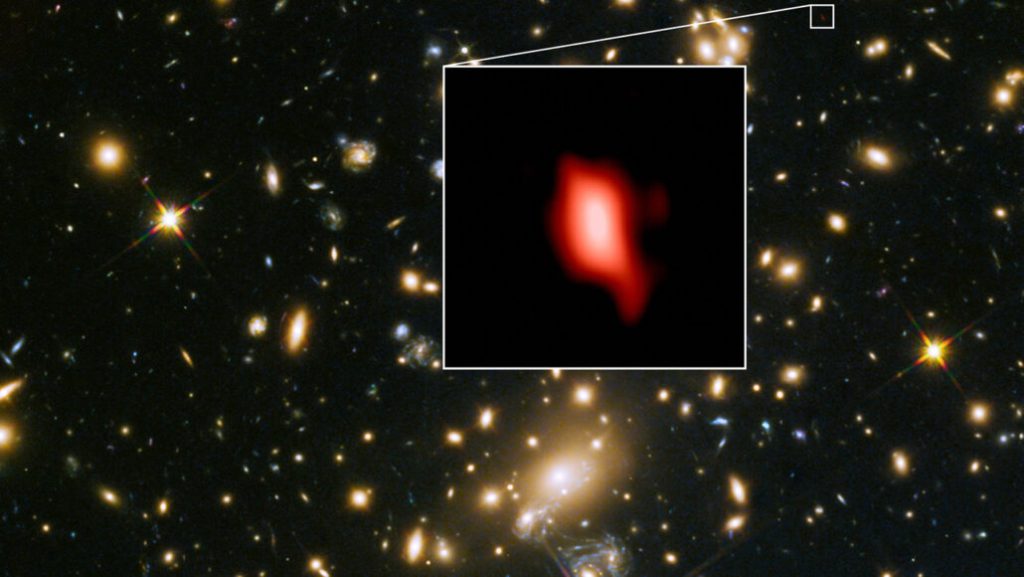The most distant rotating galaxy hails from 13.3 billion years ago

There is a galaxy spinning like a record in the early universe — far earlier than any others have been seen twirling around.
Astronomers have spotted signs of rotation in the galaxy MACS1149-JD1, JD1 for short, which sits so far away that its light takes 13.3 billion years to reach Earth. “The galaxy we analyzed, JD1, is the most distant example of a rotational galaxy,” says astronomer Akio Inoue of Waseda University in Tokyo.
“The origin of the rotational motion in galaxies is closely related to a question: how galaxies like the Milky Way formed,” Inoue says. “So, it is interesting to find the onset of rotation in the early universe.”
JD1 was discovered in 2012. Due to its great distance from Earth, its light had been stretched, or redshifted, into longer wavelengths, thanks to the expansion of the universe. That redshifted light revealed that JD1 existed just 500 million years after the Big Bang.
Astronomers used light from the entire galaxy to make that measurement. Now, using the Atacama Large Millimeter/submillimeter Array in Chile for about two months in 2018, Inoue and colleagues have measured more subtle differences in how that light is shifted across the galaxy’s disk. The new data show that, while all of JD1 is moving away from Earth, its northern part is moving away slower than the southern part. That’s a sign of rotation, the researchers report in the July 1 Astrophysical Journal Letters.
JD1 spins at about 180,000 kilometers per hour, roughly a quarter the spin speed of the Milky Way. The galaxy is also smaller than modern spiral galaxies. So JD1 may be just starting to spin, Inoue says.
The James Webb Space Telescope will observe JD1 in the next year to reveal more clues to how that galaxy, and others like ours, formed (SN: 10/6/21).